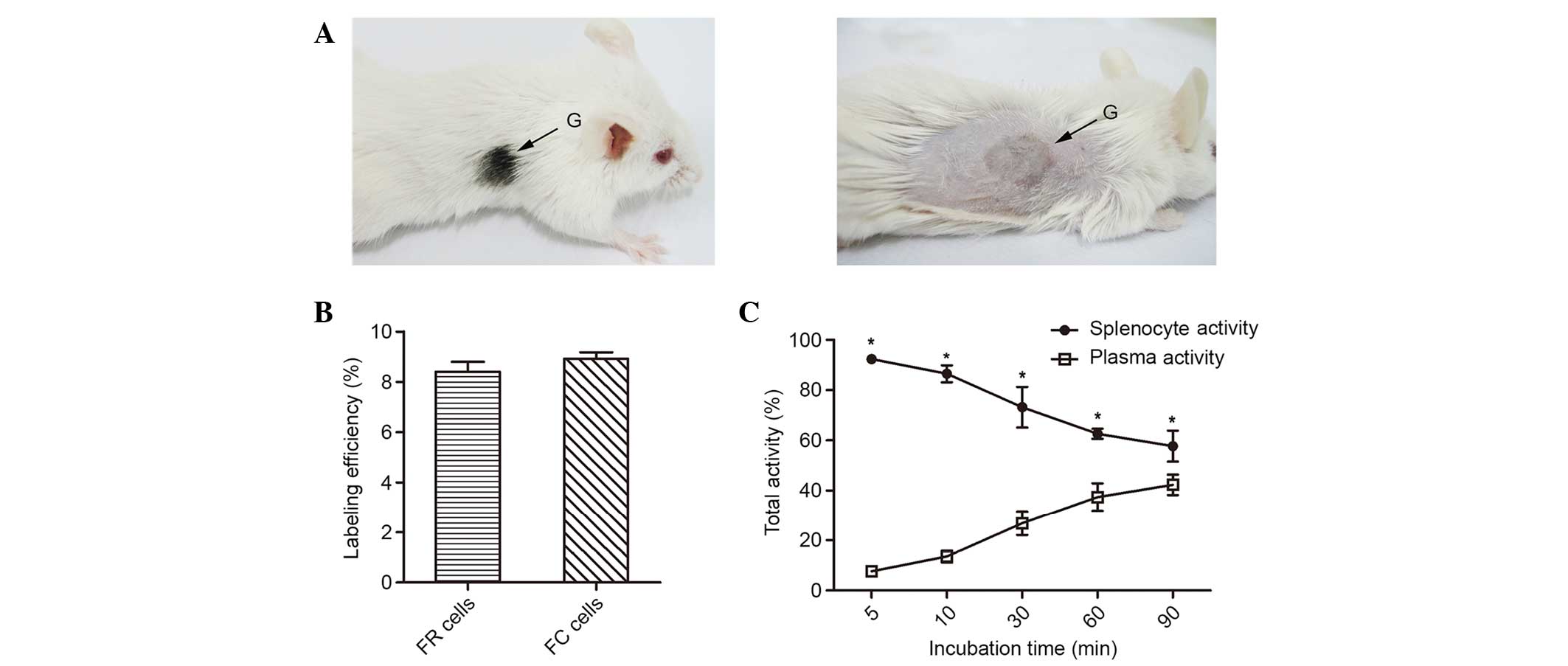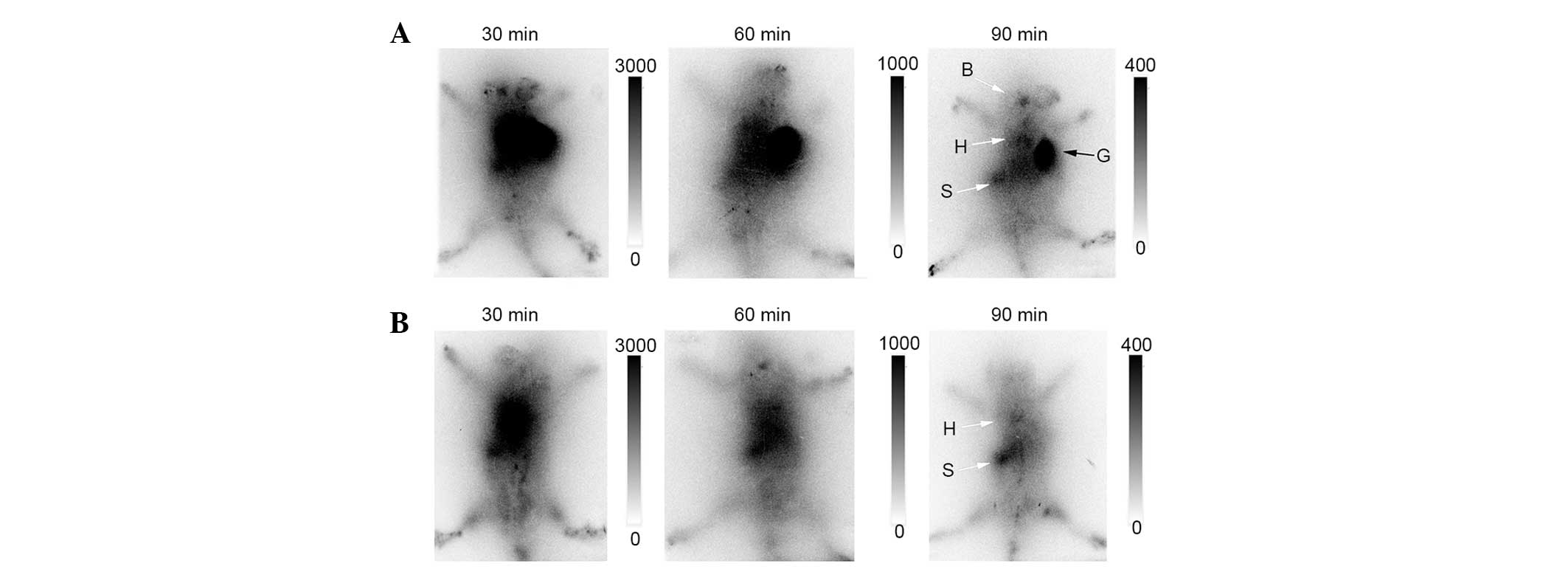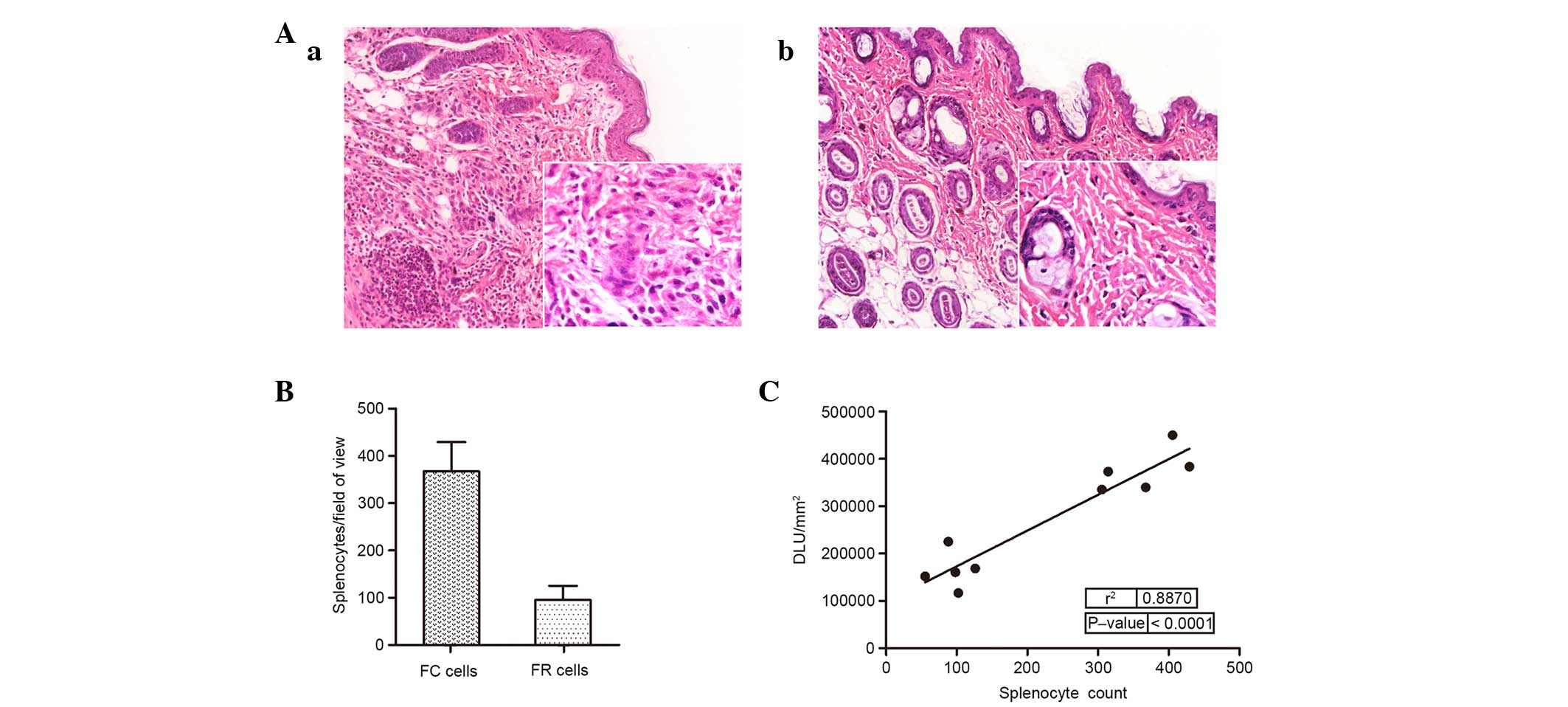|
1
|
Baraldi-Junkins C, Levin HR, Kasper EK,
Rayburn BK, Herskowitz A and Baughman KL: Complications of
endo-myocardial biopsy in heart transplant patients. J Heart Lung
Tranplant. 12:63–67. 1993.
|
|
2
|
Mueller TF, Reeve J, Jhangri GS, Mengel M,
Jacaj Z, Cairo L, Obeidat M, Todd G, Moore R, Famulski KS, et al:
The transcriptome of the implant biopsy identifies donor kidneys at
increased risk of delayed graft function. Am J Transplant. 8:78–85.
2008.
|
|
3
|
Virostko J, Henske J, Vinet L, Lamprianou
S, Dai C, Radhika A, Baldwin RM, Ansari MS, Hefti F, Skovronsky D,
et al: Multimodal image coregistration and inducible selective cell
ablation to evaluate imaging ligands. Proc Natl Acad Sci USA.
108:20719–20724. 2011. View Article : Google Scholar : PubMed/NCBI
|
|
4
|
Signore A, Mather SJ, Piaggio G, Malviya G
and Dierckx RA: Molecular imaging of inflammation/infection:
Nuclear medicine and optical imaging agents and methods. Chem Rev.
110:3112–3145. 2010. View Article : Google Scholar : PubMed/NCBI
|
|
5
|
Tsuji AB, Morita M, Li XK, Sogawa C, Sudo
H, Sugyo A, Fujino M, Sugioka A, Koizumi M and Saga T: 18F-FDG PET
for semiquantitative evaluation of acute allograft rejection and
immunosuppressive therapy efficacy in rat models of liver
transplantation. J Nucl Med. 50:827–830. 2009. View Article : Google Scholar : PubMed/NCBI
|
|
6
|
Reuter S, Schnöckel U, Edemir B, Schröter
R, Kentrup D, Pavenstädt H, Schober O, Schlatter E, Gabriëls G and
Schäfers M: Potential of noninvasive serial assessment of acute
renal allograft rejection by 18F-FDG PET to monitor treatment
efficiency. J Nucl Med. 51:1644–1652. 2010. View Article : Google Scholar : PubMed/NCBI
|
|
7
|
Grabner A, Kentrup D, Edemir B, Sirin Y,
Pavenstädt H, Schlatter E, Schober O, Schäfers M, Schnöckel U and
Reuter S: PET with F-18-FDG-labeled T lymphocytes for diagnosis of
acute rat renal allograft rejection. J Nucl Med. 54:1147–1153.
2013. View Article : Google Scholar : PubMed/NCBI
|
|
8
|
Kimura T, Hasegawa T, Nakai H, Azuma T,
Usui N, Sasaki T and Okada A: FTY720 reduces T-cell recruitment
into murine intestinal allograft and prevents activation of
graft-infiltrating cells. Transplantation. 75:1469–1474. 2003.
View Article : Google Scholar : PubMed/NCBI
|
|
9
|
Heidt S, Roelen DL, Eijsink C, van Kooten
C, Claas FH and Mulder A: Effects of immunosuppressive drugs on
purified human B cells: Evidence supporting the use of MMF and
rapamycin. Transplantation. 86:1292–1300. 2008. View Article : Google Scholar : PubMed/NCBI
|
|
10
|
Brown FG, Nikolic-Paterson DJ, Metz C,
Bucala R, Atkins RC and Lan HY: Up-regulation of macrophage
migration inhibitory factor in acute renal allograft rejection in
the rat. Clin Exp Immunol. 118:329–336. 1999. View Article : Google Scholar : PubMed/NCBI
|
|
11
|
Sun H, Yang G, Liang T, Zhang C, Song J,
Han J and Hou G: Non-invasive imaging of allogeneic transplanted
skin graft by 131I-anti-TLR5 mAb. J Cell Mol Med. 18:2437–2444.
2014. View Article : Google Scholar : PubMed/NCBI
|
|
12
|
Cao W, Manicassamy S, Tang H, Kasturi SP,
Pirani A, Murthy N and Pulendran B: Toll-like receptor-mediated
induction of type I interferon in plasmacytoid dendritic cells
requires the rapamycin-sensitive PI (3)K-mTOR-p70S6K pathway. Nat
Immunol. 9:1157–1164. 2008. View
Article : Google Scholar : PubMed/NCBI
|
|
13
|
Strauss L, Czystowska M, Szajnik M,
Mandapathil M and Whiteside TL: Differential responses of human
regulatory T cells (Treg) and effector T cells to rapamycin. PLoS
One. 4:e59942009. View Article : Google Scholar : PubMed/NCBI
|
|
14
|
Sauer S, Bruno L, Hertweck A, Finlay D,
Leleu M, Spivakov M, Knight ZA, Cobb BS, Cantrell D, O'Connor E, et
al: T cell receptor signaling controls Foxp3 expression via PI3K,
Akt, and mTOR. Proc Natl Acad Sci USA. 105:7797–7802. 2008.
View Article : Google Scholar : PubMed/NCBI
|
|
15
|
Battaglia M, Stabilini A and Roncarolo MG:
Rapamycin selectively expands CD4+CD25+FoxP3+ regulatory T cells.
Blood. 105:4743–4748. 2005. View Article : Google Scholar : PubMed/NCBI
|
|
16
|
Hidalgo M and Rowinsky EK: The
rapamycin-sensitive signal transduction pathway as a target for
cancer therapy. Oncogene. 19:6680–6686. 2000. View Article : Google Scholar
|
|
17
|
Wullschleger S, Loewith R and Hall MN: TOR
signaling in growth and metabolism. Cell. 124:471–484. 2006.
View Article : Google Scholar : PubMed/NCBI
|
|
18
|
Teutonico A, Schena PF and Di Paolo S:
Glucose metabolism in renal transplant recipients: Effect of
calcineurin inhibitor withdrawal and conversion to sirolimus. J Am
Soc Nephrol. 16:3128–3135. 2005. View Article : Google Scholar : PubMed/NCBI
|
|
19
|
Finlay D and Cantrell D: Phosphoinositide
3-kinase and the mammalian target of rapamycin pathways control T
cell migration. Ann N Y Acad Sci. 1183:149–157. 2010. View Article : Google Scholar : PubMed/NCBI
|
|
20
|
Hou G, Valujskikh A, Bayer J, Stavitsky
AB, Metz C and Heeger PS: In vivo blockade of macrophage migration
inhibitory factor prevents skin graft destruction after indirect
allorecognition. Transplantation. 72:1890–1897. 2001. View Article : Google Scholar
|
|
21
|
Fantini MC, Dominitzki S, Rizzo A, Neurath
MF and Becker C: In vitro generation of CD4+ CD25+ regulatory cells
from murine naive T cells. Nat Protoc. 2:1789–1794. 2007.
View Article : Google Scholar : PubMed/NCBI
|
|
22
|
Meier R, Piert M, Piontek G, Rudelius M,
Oostendorp RA, Senekowitsch-Schmidtke R, Henning TD, Wels WS,
Uherek C, Rummeny EJ and Daldrup-Link HE: Tracking of [18F]
FDG-labeled natural killer cells to HER2/neu-positive tumors. Nucl
Med Biol. 35:579–588. 2008. View Article : Google Scholar
|
|
23
|
Butler KS, Lovato DM, Adolphi NL, Belfon
R, Fegan DL, Monson TC, Hathaway HJ, Huber DL, Tessier TE, Bryant
HC, et al: Development of antibody-tagged nanoparticles for
detection of transplant rejection using biomagnetic sensors. Cell
Transplant. 22:1943–1954. 2013. View Article : Google Scholar
|
|
24
|
Tanaka M, Swijnenburg RJ, Gunawan F, Cao
YA, Yang Y, Caffarelli AD, de Bruin JL, Contag CH and Robbins RC:
In vivo visualization of cardiac allograft rejection and
trafficking passenger leukocytes using bioluminescence imaging.
Circulation. 112(9 Suppl): I105–I110. 2005.PubMed/NCBI
|
|
25
|
Greiner DL, Shultz LD, Yates J, Appel MC,
Perdrizet G, Hesselton RM, Schweitzer I, Beamer WG, Shultz KL,
Pelsue SC, et al: Improved engraftment of human spleen cells in
NOD/LtSz-scid/scid mice as compared with C.B-17-scid/scid mice. Am
J Pathol. 146:888–902. 1995.PubMed/NCBI
|
|
26
|
Valmori D, Tosello V, Souleimanian NE,
Godefroy E, Scotto L, Wang Y and Ayyoub M: Rapamycin-mediated
enrichment of T cells with regulatory activity in stimulated CD4+ T
cell cultures is not due to the selective expansion of naturally
occurring regulatory T cells but to the induction of regulatory
functions in conventional CD4+ T cells. J Immunol. 177:944–949.
2006. View Article : Google Scholar : PubMed/NCBI
|
|
27
|
Ishimori T, Saga T, Mamede M, Kobayashi H,
Higashi T, Nakamoto Y, Sato N and Konishi J: Increased (18)F-FDG
uptake in a model of inflammation: Concanavalin A-mediated
lymphocyte activation. J Nucl Med. 43:658–663. 2002.PubMed/NCBI
|
|
28
|
Pellegrino D, Bonab AA, Dragotakes SC,
Pitman JT, Mariani G and Carter EA: Inflammation and infection:
Imaging properties of 18F-FDG-labeled white blood cells versus
18F-FDG. J Nucl Med. 46:1522–1530. 2005.PubMed/NCBI
|
|
29
|
Chen DL, Wang X, Yamamoto S, Carpenter D,
Engle JT, Li W, Lin X, Kreisel D, Krupnick AS, Huang HJ and Gelman
AE: Increased T cell glucose uptake reflects acute rejection in
lung grafts. Am J Transplant. 13:2540–2549. 2013. View Article : Google Scholar : PubMed/NCBI
|













